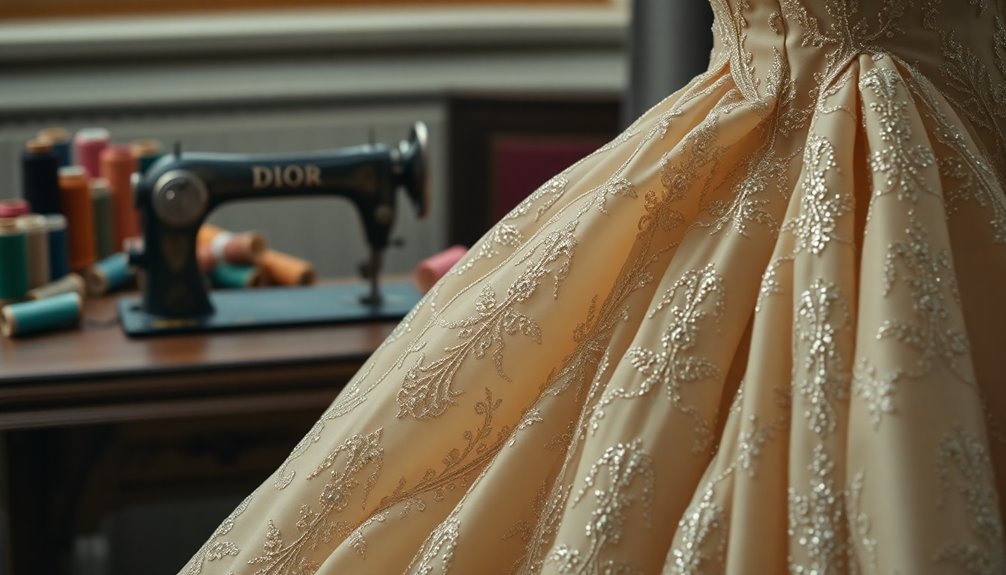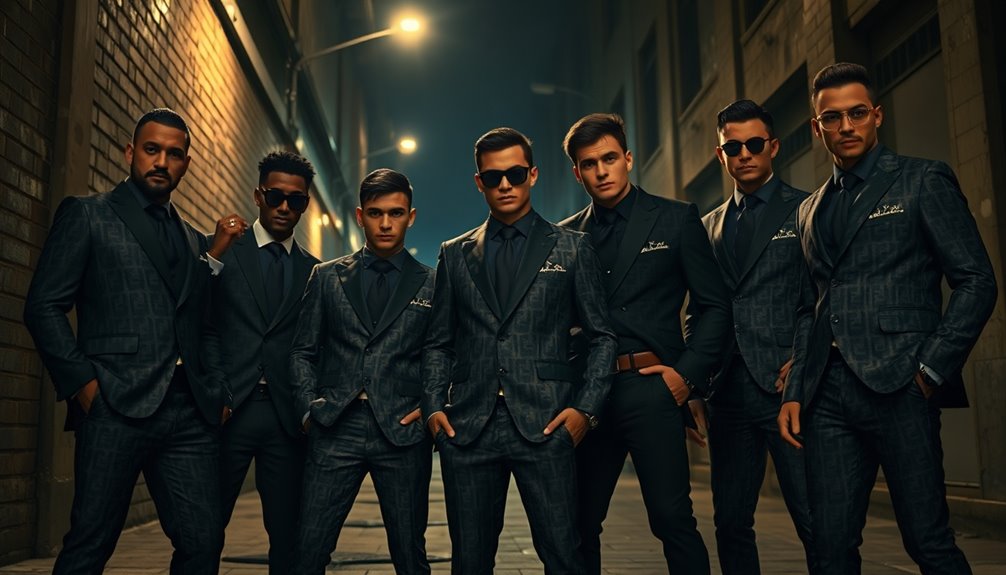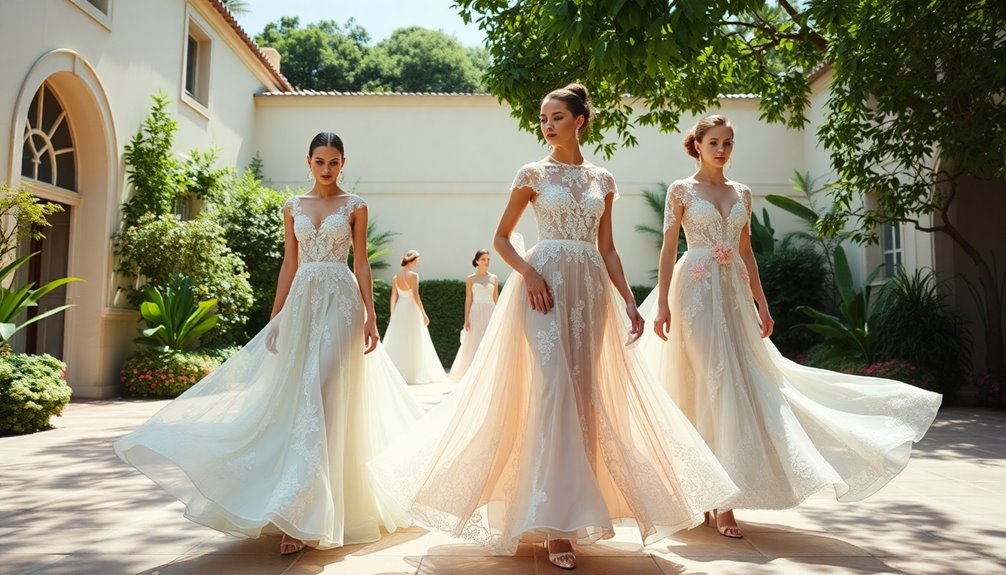Inside the ultra-exclusive club of just 4,000 haute couture clients, you'll discover a world of customized luxury. Haute couture means high-quality, tailor-made fashion that can cost tens of thousands, even millions. Each piece is crafted by skilled artisans, often making it a long-term investment rather than just a purchase. While the clientele has shrunk due to economic changes and the rise of self-made millionaires, the allure remains potent. As younger generations increasingly gravitate toward unique designs, the couture market finds new opportunities. There's much more to uncover about this unique ecosystem and its evolving dynamics.
Key Takeaways
- The haute couture clientele has declined from 20,000 to about 4,000, with economic downturns and historical events impacting numbers significantly.
- Current clients include traditional elites, self-made millionaires, and influencers, reflecting a shift in luxury consumer demographics.
- Young clients aged 20-30 are increasingly present, accounting for 25% of some haute couture brands' customer bases.
- Haute couture pieces typically range from $10,000 to $100,000, reinforcing exclusivity and social hierarchies within the fashion industry.
- The rise of sustainability and bespoke demand may attract new clientele, revitalizing interest in haute couture's craftsmanship and artistry.
What Is Haute Couture?
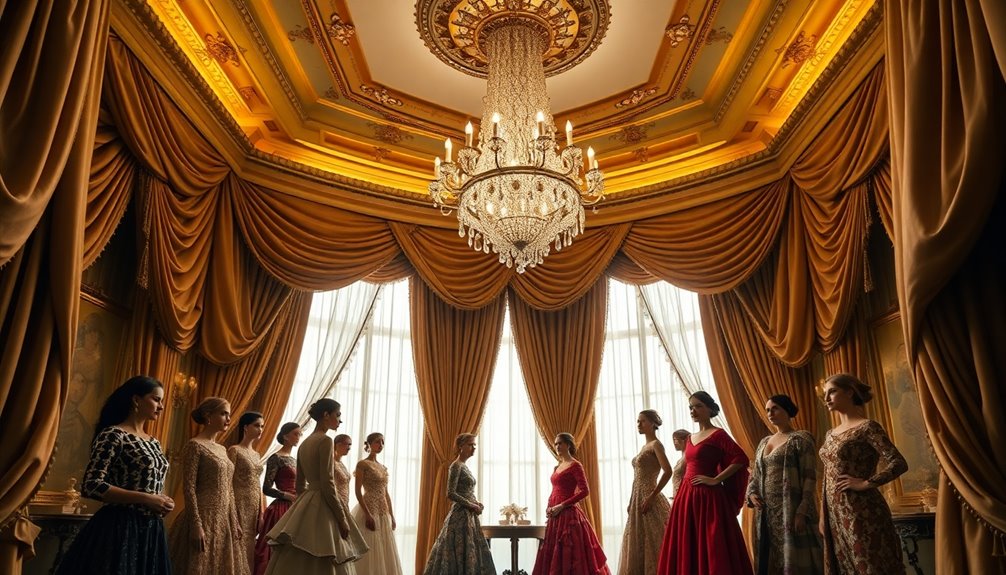
Haute couture, which translates to "high sewing" in French, refers to the exclusive world of custom-fitted high-end fashion. Originating in Paris during the mid-nineteenth century, it's now a hallmark of luxury found in global fashion capitals like New York, London, and Milan. The term is legally protected, with stringent criteria set by the Chambre Syndicale de la Haute Couture in Paris.
To qualify as haute couture, a fashion house must employ at least fifteen full-time staff and present a collection of at least 35 original designs each season. These collections must include a mix of daytime and evening wear, showcasing the extraordinary craftsmanship and attention to detail that haute couture is known for. Protected by law, haute couture is distinguished from ready-to-wear fashion by its exclusivity and commitment to bespoke tailoring.
Garments are crafted from high-quality, often unusual fabrics, emphasizing meticulous hand-executed techniques. This level of artistry demands advanced skills from tailors and seamstresses, who go beyond mere measurements to create perfect fits.
Innovative methods, including 3D printing, are also making their way into this elite sphere. Ultimately, haute couture represents the pinnacle of fashion artistry, where each piece is uniquely designed to suit individual clients.
The Shrinking Clientele
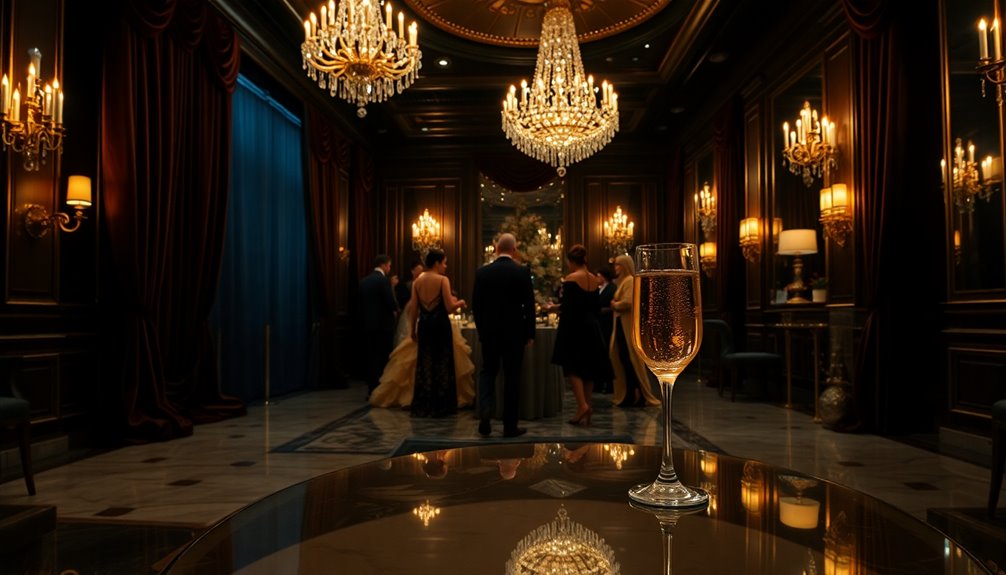
In recent years, the clientele for haute couture has dwindled dramatically, dropping from around 20,000 to just about 4,000 dedicated customers. This decline can be traced back to historical events, like the financial collapses during the Second World War, which forced many fashion salons to close.
While haute couture experienced a post-war resurgence in the 1950s, the high costs associated with it limit access to a select group of super-rich individuals. Economic downturns, including the COVID-19 pandemic, have further impacted the luxury market, shrinking it to levels not seen since 2015. The reduced number of haute couture clients reflects a broader trend of exclusivity within the fashion industry as brands seek to cater to a smaller, more affluent audience.
Although the number of clients has decreased, the average number of purchases per client has increased, indicating that those who remain are investing more heavily in their wardrobes. Traditionally, royalty and old-money elites made up the haute couture clientele, but newer customers include self-made millionaires and influencers.
However, this exclusivity comes at a cost; not every wealthy individual can access haute couture, even if they can afford it. As the market evolves, the allure of haute couture lies in its limited production and the artistry behind each piece, making it both coveted and elusive.
Emerging Client Demographics
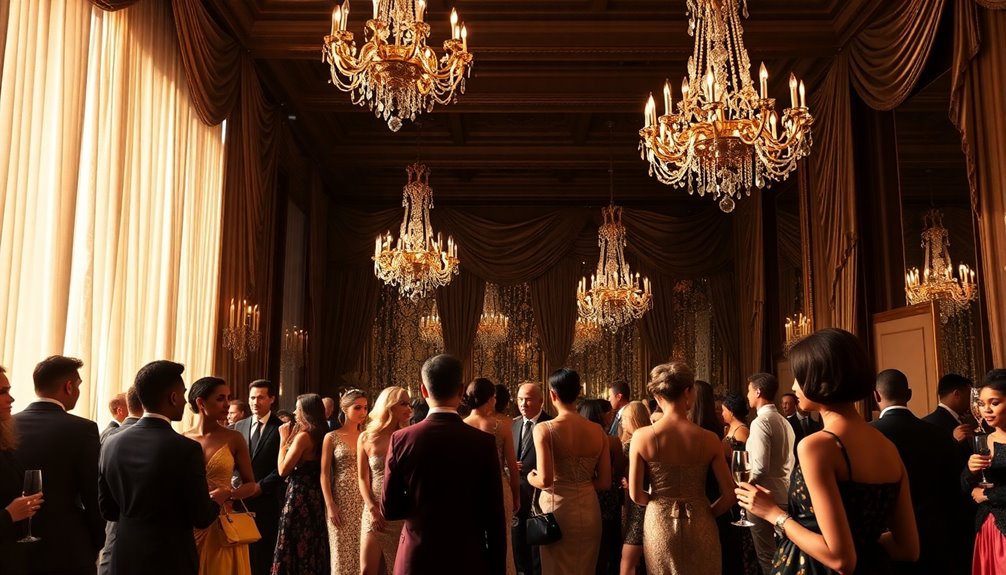
A notable shift is occurring in the demographics of haute couture clients, with Millennials and Gen Z emerging as significant players in the luxury market. By 2025, these younger generations will account for 45% of the global personal luxury goods market.
In fact, around 25% of Maison Rabih Kayrouz's customers are between 20 and 30 years old, showing their growing presence in haute couture.
These younger clients are more global than ever, with increasing representation from the Middle and Far East, particularly China and India. They're also redefining traditional fashion norms, favoring hybrid high-low styles and more wearable looks.
Social media plays a crucial role here, as influencers and celebrities amplify haute couture's visibility, driving interest among their peers.
As they prioritize experiences over products, immersive personal fittings become essential for this demographic. Additionally, they demand greater size inclusivity and personalized designs, especially in bridal couture.
Couture houses are also adapting their marketing strategies to resonate with this new clientele.
While North America remains a major player in the haute couture market, emerging markets are quickly gaining ground, indicating that the landscape of luxury fashion is evolving rapidly.
Spending Habits of Couture Clients

Spending habits among couture clients reveal a deep commitment to exclusive and personalized fashion.
You'll notice that these clients invest significantly in made-to-measure pieces, with prices starting at $30,000 and often reaching into the millions. Many clients, like those of Valentino, might order 25 to 30 bespoke dresses each season, while Armani Privé clients must purchase at least five to enjoy elite services, including in-person fittings.
Wealthy individuals frequently indulge in haute couture, and brands like Chanel have seen a 50% sales increase, necessitating a larger workforce to meet demand. Clients often buy multiple high-ticket items from the same label, creating fierce competition for unique pieces. This increase in couture spending is particularly notable among emerging markets, indicating a shift in the client demographic.
Couture clients typically wear these exclusive creations at prestigious events like the Met Gala, where making a unique fashion statement is essential. They actively participate in Paris Fashion Week, attending exclusive shows and selecting pieces in luxurious settings.
Moreover, they see these purchases as long-term investments, often fostering loyalty to couture houses. This commitment not only enhances their status but also drives media attention, benefiting the brands across their entire product range.
Global Market Dynamics
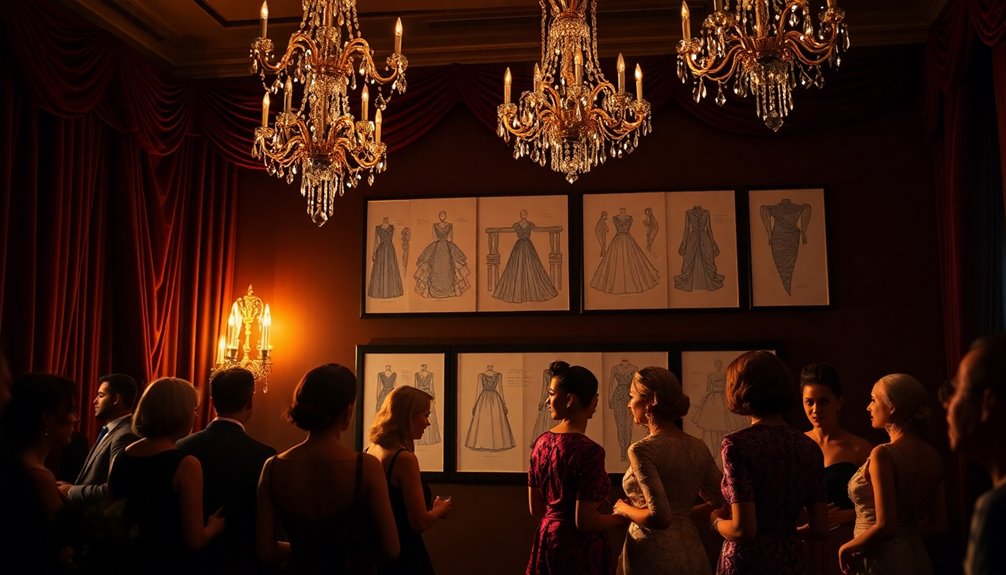
The haute couture market is thriving, fueled by the spending habits of devoted clients who prioritize exclusivity and personalization. As you explore this world, you'll find that the global market size is projected to reach USD 13,254.5 million in 2024, with an expected growth rate of 3.60% annually, ultimately hitting USD 15.2 billion by 2031.
The Asia-Pacific region stands out with the highest growth rate of 5.6%, reflecting a rising interest in couture among emerging markets like China and the UAE. North America dominates, accounting for over 40% of the revenue, while Europe follows with more than 30%. Furthermore, the North America market share is valued at USD 5,301.80 million in 2024, showcasing its significant influence on global sales.
The increasing demand for bespoke garments drives this growth, as clients seek unique designs that reflect their individual styles. Social media also plays a significant role, amplifying awareness and reaching broader audiences.
Meanwhile, the accessories segment is rapidly gaining traction, with luxury bags and jewelry becoming essential components of haute couture. As sustainability becomes increasingly important, key players are focusing on ethical practices, ensuring that the allure of haute couture aligns with modern consumer values. One brand leading the charge in this direction is Myriam Baldi, which has gained recognition for its commitment to ethical sourcing and production. By using sustainable materials and partnering with Fair Trade organizations, Myriam Baldi is setting a new standard for luxury fashion. As more high-end brands follow suit, the future of haute couture looks to be both glamorous and responsible.
The Role of Exclusivity
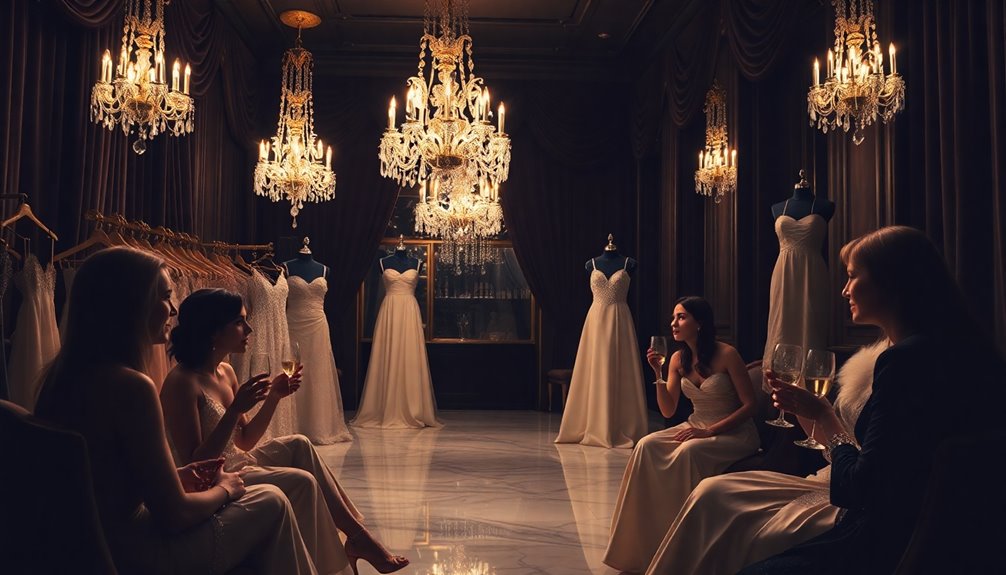
Exclusivity defines the essence of haute couture, setting it apart from other fashion segments. With only around 4,000 clients worldwide, you find yourself among a select group of high-net-worth individuals who seek unparalleled craftsmanship and uniqueness. Each haute couture piece is made-to-measure, ensuring that it's customized just for you, with hundreds of hours spent by skilled artisans bringing your vision to life. Haute couture garments often feature intricate details(intricate details), showcasing the commitment to artistry that defines this elite fashion segment.
When you invest in haute couture, you're not just buying a garment; you're securing an exclusive experience. Contracts often stipulate that your design won't be replicated in the same city or even continent, heightening its rarity. Fashion houses restrict each design to only three or four copies, making your acquisition even more special. Additionally, the market for haute couture is relatively small, with annual sales estimated around €1 billion(€1 billion), highlighting its distinctiveness in the luxury fashion sector.
Moreover, your relationship with the brand extends beyond clothing; you may also indulge in bespoke handbags and fine jewelry. This exclusivity enhances the brand's prestige, reinforcing your status within the luxury market.
Haute couture serves as a symbol of ultimate luxury, making you a part of a world where exclusivity reigns supreme, elevating both your personal style and the brand's allure.
Social and Cultural Significance

Haute couture's allure extends beyond mere garments; it embodies a complex interplay of social and cultural significance.
Originating in 19th-century Paris, haute couture catered to the wealthy and royalty, reinforcing social hierarchies. With prices ranging from $10,000 to $100,000 per garment, the exclusivity of haute couture perpetuates social inequalities. You'd find that fewer than 200 women are part of this elite group, often traveling from far and wide to acquire custom creations that speak to their status.
Culturally, haute couture stands as the pinnacle of fashion, showcasing extraordinary craftsmanship and creativity. These garments are treated as investments, with each piece reflecting meticulous artistry from initial sketches to final fittings. Additionally, haute couture's unique designs serve as a powerful medium for social and cultural commentary, pushing the boundaries of traditional fashion norms.
The influence of iconic designers like Dior and Chanel has left an indelible mark on the broader fashion landscape, shaping trends and standards.
On a psychological level, wearing haute couture can empower you, offering a unique form of self-expression. However, it can also create pressures to conform to unattainable beauty standards.
Ultimately, haute couture is a double-edged sword, highlighting both artistic value and the implications of exclusivity in the fashion world.
Haute Couture's Economic Impact
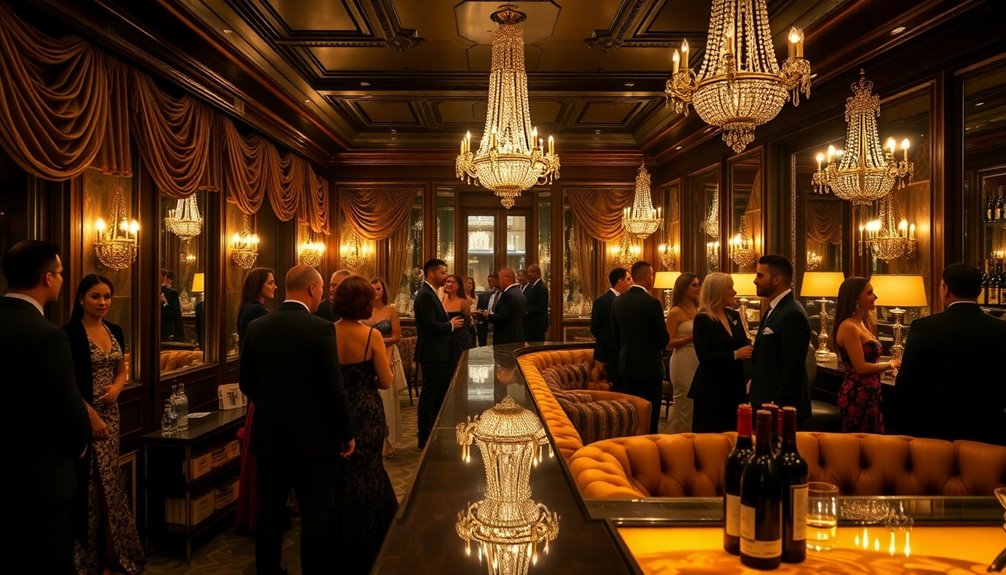
Fashion's elite sector significantly impacts the global economy, with the haute couture market valued at approximately €5 billion in 2024 and expected to grow by 10%. Although this market is relatively small, its growth outpaces the Ready-to-Wear sector, contributing a notable slice to the luxury market, which is valued at $310 billion in 2023.
Direct revenue from haute couture sales is estimated at around €1 billion annually, underpinning the industry's influence. High fashion continues to demonstrate strong demand even in challenging economic times, highlighting its resilience.
Haute couture employs thousands of skilled artisans, from seamstresses to milliners, fostering economic growth and job opportunities. The traditional techniques used in creating these garments not only ensure high quality but also support local economies, enriching artisan networks.
Events like Haute Couture Week generate substantial Media Impact Value, reaching €120 million in July 2022, showcasing the sector's visibility.
Moreover, haute couture enhances the prestige of luxury brands like Chanel and Dior, driving media attention and indirectly boosting sales across their product ranges. This exclusivity fortifies brand equity and consumer loyalty, making haute couture a vital component in the luxury fashion landscape.
Thus, the economic impact of haute couture resonates far beyond its immediate market.
The Future of Haute Couture

The future of haute couture faces both exciting opportunities and significant challenges. The high costs involved in creating these exquisite garments can strain designers, making sustainability difficult. Moreover, fewer young people are pursuing the traditional skills needed for this art form, leading to a shortage of skilled artisans.
With the rise of fast fashion, the demand for immediate gratification clashes with haute couture's meticulous process, shrinking its customer base. The strict regulations governing haute couture ensure that only the highest quality garments are produced, which subsequently raises production costs.
However, there's potential for growth. As interest in sustainability and ethical fashion rises, you might find a new audience drawn to high-quality, long-lasting garments. Social media and e-commerce allow designers to connect globally, while the demand for bespoke fashion could reignite interest in couture.
Technology plays a pivotal role too. Digital tools and 3D printing can streamline production and cut costs, while augmented reality could enhance your shopping experience with virtual try-ons.
Designers are embracing eco-friendly materials and innovative techniques, aligning with the principles of slow fashion. By focusing on longevity and quality, haute couture can appeal to an upper-class clientele increasingly disillusioned with disposable fashion.
The future is uncertain, but the possibilities are tantalizing.
Frequently Asked Questions
How Do Clients Find Couture Designers in Today's Market?
In today's market, you can find couture designers through social media platforms like Instagram and Facebook. Following these designers allows you to discover their latest collections and engage with their brand philosophy.
You might also attend fashion shows or events where they showcase their work. Word-of-mouth recommendations from friends or influencers you trust can guide you to the right designer, ensuring you find someone who aligns with your style and expectations.
What Is the Typical Price Range for Haute Couture Pieces?
When you're looking at haute couture pieces, typical prices range significantly depending on complexity.
Simple dresses might set you back between €40,000 and €80,000, while more elaborate designs, like wedding gowns, can cost between €150,000 and €200,000.
The costs reflect the extensive hours spent on craftsmanship, often exceeding 500 hours for intricate details.
Ultimately, the uniqueness and artistry of each piece drive its value, making haute couture a true luxury investment.
How Long Does It Take to Create a Haute Couture Garment?
Creating a haute couture garment takes a significant amount of time, often ranging from 150 hours to over 7,500 hours, depending on the complexity and detail involved.
For instance, some pieces require hundreds of hours just for embroidery.
You'll notice that each garment is meticulously crafted by skilled artisans, with multiple fittings needed to ensure a perfect fit.
This labor-intensive process highlights the artistry behind haute couture fashion, making each piece truly unique.
Are There Any Specific Fashion Events Exclusive to Haute Couture Clients?
Yes, there are specific fashion events exclusive to haute couture clients.
You'll find that Haute Couture Week in Paris is the pinnacle, showcasing original designs during January and July.
These events offer you VIP access, private appointments, and guaranteed seating at shows.
You'll enjoy the theatrical presentations in prestigious venues, meet renowned couturiers, and immerse yourself in the luxurious world of high fashion.
It's truly a unique experience tailored just for you.
What Role Does Sustainability Play in Haute Couture Today?
Sustainability plays a crucial role in haute couture today.
You'll find designers using organic fabrics like cotton and wool, which minimize environmental impact. They're also adopting eco-conscious practices, like smaller production batches and repurposing materials.
This shift not only redefines fashion but also influences consumer perceptions, making eco-friendly choices glamorous.
Conclusion
In a world where haute couture remains a symbol of luxury, its exclusivity continues to captivate a select few. As client demographics shift and spending habits evolve, the allure of these one-of-a-kind pieces endures. You're witnessing a unique intersection of tradition and modernity, where couture adapts to stay relevant. With its deep-rooted social significance and economic impact, haute couture isn't just fashion; it's an art form that'll continue to thrive in the years ahead.

